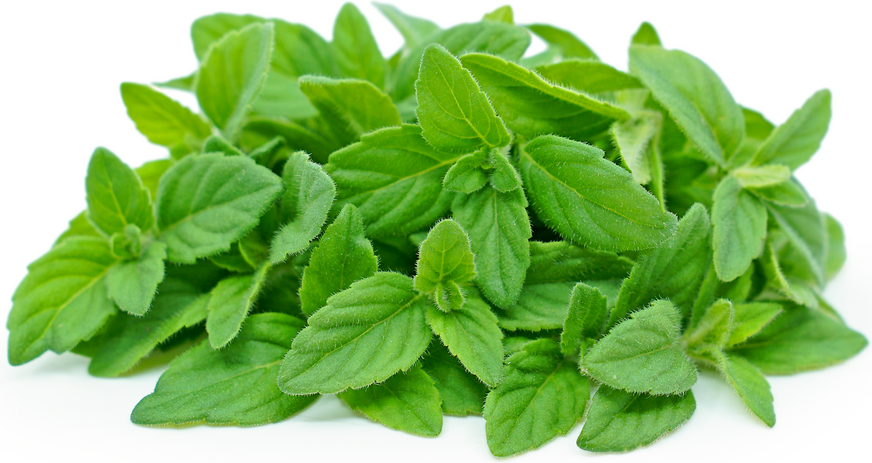


Banana Mint
Estimated Inventory, lb : 0
Description/Taste
Banana mint grows low to the ground and bears many small, oval to lanceolate shaped leaves on medium to slender, green stems. The bright green leaves have lightly serrated edges and are coated in a soft layer of fuzz. In the summer, Banana mint also develops many small lilac flowers that grow in clusters and are highly fragrant. In addition to the flowers, the leaves of the Banana mint are aromatic with a sweet, tropical scent and are crisp with bright, herbal flavors of peppermint and bananas.
Seasons/Availability
Banana mint is available year-round.
Current Facts
Banana mint, botanically classified as Mentha arvensis, is a small perennial, creeping plant that grows to less than one meter in height and belongs to the Lamiaceae family. Banana mint is not grown on a large commercial scale, but it has become a popular home garden plant cultivated for its novelty. Herb enthusiasts favor the fruity mint for its unique scent and flavor, and it is popularly added to drinks and desserts for a unique, herbal taste.
Nutritional Value
Banana mint contains some vitamins A and C, phosphorus, iron, potassium, calcium, and magnesium.
Applications
Banana mint is most commonly consumed raw as its flavor and scent are showcased when lightly crushed and used fresh, out-of-hand. The leaves can be added to both hot and cold drinks such as teas, smoothies, milkshakes, and lemonade, and they can be used in cocktails as an unusual twist on the classic drinks such as the mojito. Banana mint can also be minced and tossed into green and fruit salads, chopped into sauces, or lightly sprinkled over cooked meats. The leaves are popularly incorporated into desserts and can be baked into brownies, muffins, fudge, and cookies, or they can be topped over ice cream and pudding. Banana mint pairs well with lime juice, honey, toasted nuts, pineapple, chocolate, sparkling wine, and brown sugar. Fresh mint leaves will keep up to one week when trimmed, placed in a glass of water, and lightly covered in the refrigerator. When dried, the mint leaves will keep over a year when stored in an airtight container in a cool, dark, and dry place.
Ethnic/Cultural Info
In the United States, Banana mint is considered a specialty, home garden variety that gardeners choose to plant for its unusual scent and flavor. In addition to its novelty, the plant also bears many small lilac flowers that can attract a high number of pollinators such as bees, butterflies, and birds. By increasing the number of pollinators in the garden, Banana mint can help sustain many different types of plants and are sometimes planted solely as ornamental. Banana mint is also popularly used as controlled ground cover as it grows low to the ground and prefers to expand and spread out across spaces. With any species of mint, it is important to monitor the growth of the plant or plant in containers as it can become an aggressive species that can take over the garden.
Geography/History
The history of Banana mint is mostly unknown with rumors tracing the plant back to France. Today Banana mint is found in home gardens, specialty grocers, and select farmers markets in the United States and Europe.
Podcast




